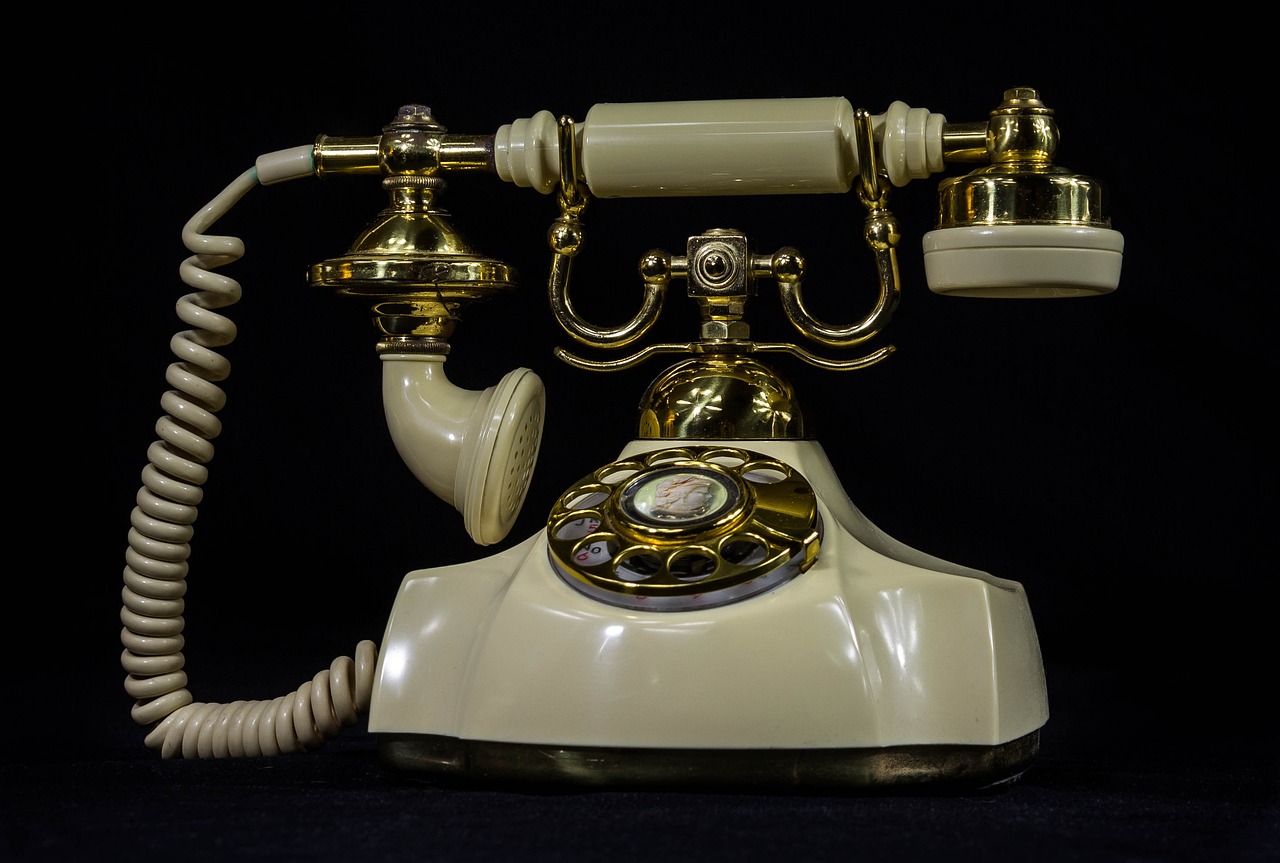Building Resilience through Effective Communication
In today's fast-paced world, the ability to bounce back from adversity—what we call resilience—is more crucial than ever. But how do we cultivate this resilience? The answer lies in the power of effective communication. Imagine resilience as a sturdy tree that withstands the fiercest storms; communication is the rich soil that nourishes its roots. By enhancing our communication skills, we not only strengthen our own resilience but also that of our teams and communities.
Effective communication is not just about exchanging information; it’s about creating connections. It’s the bridge that links our thoughts, feelings, and experiences to others. When we communicate effectively, we foster an environment where individuals feel valued and understood, which is essential for resilience. In this article, we will delve into the various strategies and techniques that can bolster our communication skills, ultimately enhancing our ability to handle life's challenges.
Understanding how communication plays a crucial role in building resilience is essential for personal and professional growth. Just as a strong foundation is necessary for a building to withstand earthquakes, effective communication forms the bedrock of resilient relationships. When we communicate openly and honestly, we create a supportive atmosphere that encourages collaboration and problem-solving.
Moreover, effective communication can help mitigate misunderstandings and conflicts, which often serve as barriers to resilience. By promoting a culture of transparency and respect, we enable individuals and teams to navigate challenges more effectively. This section will discuss the foundational elements that contribute to resilient communication practices, emphasizing the importance of clarity, empathy, and active engagement.
Implementing specific communication strategies can significantly improve resilience. Think of these strategies as tools in a toolbox; each one serves a unique purpose in helping us build stronger connections and navigate through tough times. Here are some practical techniques that individuals and teams can adopt:
- Active Listening: This involves fully concentrating, understanding, and responding to what is being said.
- Constructive Feedback: Providing and receiving feedback in a way that promotes growth and understanding.
- Open Dialogue: Fostering an environment where individuals feel safe to share their thoughts and feelings.
By embracing these strategies, we can create a culture that not only withstands challenges but thrives in the face of them.
Active listening is a vital component of effective communication. It’s not just about hearing words; it’s about understanding the emotions and intentions behind those words. Imagine you’re at a concert, and the music resonates with you. That’s how active listening should feel—immersive and engaging. Here are some techniques that can enhance listening skills:
Reflective listening involves paraphrasing what is said to ensure understanding. This technique not only clarifies communication but also builds trust and rapport, crucial for resilient relationships. For instance, if a colleague shares their concerns about a project, reflecting back what you’ve heard can validate their feelings and open up a constructive dialogue.
Nonverbal cues play a significant role in communication. Body language, facial expressions, and tone can all impact the effectiveness of messages. Have you ever noticed how a simple smile can brighten someone’s day? Similarly, being aware of nonverbal signals can enhance our communication and foster resilience. For example, maintaining eye contact shows engagement, while a warm tone can convey empathy and support.
Providing and receiving constructive feedback is essential for growth. Think of feedback as a compass that guides us toward improvement. When delivered effectively, feedback can enhance resilience by promoting a culture of openness and continuous improvement. It’s about creating a safe space where individuals feel empowered to share their insights without fear of judgment.
Creating an environment that encourages open dialogue is key to resilience. Just as a garden needs sunlight and water to flourish, communication needs a supportive atmosphere to thrive. This section highlights strategies for fostering a supportive atmosphere that promotes honest and constructive communication among individuals and teams.
Encouraging open dialogue helps to build trust and understanding. It’s like opening the windows of a stuffy room—fresh air can rejuvenate relationships. Methods for creating spaces where individuals feel safe to express their thoughts and feelings include:
- Regular check-ins to gauge feelings and concerns.
- Creating anonymous feedback channels to allow for honest expression.
- Hosting team-building activities that promote camaraderie and openness.
Setting clear communication norms can enhance interactions. Just as road signs guide drivers, communication norms provide a framework for respectful and effective exchanges. Establishing guidelines that promote respectful and effective communication contributes to a resilient community. These norms can include:
- Encouraging everyone to speak up.
- Respecting differing opinions.
- Practicing active listening in all interactions.
Q: How does effective communication improve resilience?
A: Effective communication fosters understanding and support, which are critical for navigating challenges and building strong relationships.
Q: What are some signs of effective communication in a team?
A: Signs include open dialogue, active listening, constructive feedback, and a culture of respect and trust.
Q: Can nonverbal cues impact communication?
A: Yes, nonverbal cues such as body language and facial expressions can significantly influence how messages are received and understood.

The Importance of Communication in Resilience
Understanding how communication plays a crucial role in building resilience is essential for personal and professional growth. Imagine resilience as a sturdy tree that stands firm against the fiercest storms. Just like that tree, effective communication acts as the roots that anchor it in place, providing stability and strength. Without these roots, the tree may easily topple over when faced with adversity. In our daily lives, whether at work or in personal relationships, the ability to communicate effectively can make all the difference when navigating challenges.
Effective communication fosters a sense of belonging and safety, which is vital for resilience. When individuals feel heard and understood, they are more likely to express their thoughts and emotions openly. This openness is crucial in creating a supportive environment where people can share their struggles without fear of judgment. In essence, strong communication can transform a group of individuals into a cohesive unit, ready to tackle difficulties together.
Moreover, resilient communication is characterized by several foundational elements:
- Clarity: Clear communication helps prevent misunderstandings that can lead to conflict, ensuring that everyone is on the same page.
- Empathy: Understanding others’ feelings and perspectives fosters deeper connections and promotes a supportive atmosphere.
- Trust: Open and honest communication builds trust, which is essential for collaboration and resilience in any relationship.
In a world where challenges are inevitable, the ability to communicate effectively can serve as a lifeline. It empowers individuals to express their needs and seek support, reinforcing the notion that they are not alone in their struggles. This sense of connection and support can significantly enhance an individual's ability to bounce back from setbacks.
Furthermore, in team settings, effective communication encourages collaboration and innovation. When team members can share ideas freely and constructively, they are better equipped to brainstorm solutions and adapt to changing circumstances. This dynamic not only boosts morale but also enhances problem-solving capabilities, making the team more resilient in the face of challenges.
In conclusion, the importance of communication in resilience cannot be overstated. It serves as the bedrock upon which strong relationships are built, enabling individuals and teams to navigate difficulties with confidence and support. By cultivating effective communication practices, we can create environments that foster resilience, allowing us to thrive even when the going gets tough.

Key Communication Strategies for Resilience
When it comes to building resilience, effective communication is not just a nice-to-have; it's an absolute necessity. Imagine trying to navigate a stormy sea without a compass or a map—communication is that guiding light that keeps us on course. In both personal and professional settings, the way we convey our thoughts, feelings, and intentions can significantly impact our ability to bounce back from challenges. So, what are some key strategies we can implement to enhance our resilience through communication? Let's dive into this crucial topic!
First off, one of the most powerful tools in our communication arsenal is the practice of active listening. This isn't just about hearing the words that are being said; it's about really engaging with the speaker. Active listening involves giving full attention, acknowledging the speaker's emotions, and responding thoughtfully. By doing this, we not only validate the other person's feelings but also create a safe space for open dialogue. It's like being the anchor in someone else's storm, providing stability and understanding.
To hone our active listening skills, we can adopt a few practical techniques:
- Maintain Eye Contact: This simple act shows the speaker that you are genuinely interested in what they have to say.
- Ask Clarifying Questions: If something isn’t clear, don’t hesitate to ask questions. This demonstrates your commitment to understanding their perspective.
- Summarize What You Hear: Paraphrasing the speaker's words can help confirm that you’re on the same page and can clarify any misunderstandings.
Next, let's talk about nonverbal communication cues. Did you know that a significant portion of our communication is nonverbal? Body language, facial expressions, and tone of voice can either reinforce or contradict what we say. For instance, if you’re offering support but your body language is closed off, the message may not land as intended. Being aware of these cues can enhance the effectiveness of our communication, making it more authentic and impactful.
Another effective strategy is reflective listening. This technique involves paraphrasing what the speaker has said to ensure that you’re accurately understanding their message. Not only does this clarify communication, but it also builds trust and rapport. When someone feels heard, they are more likely to open up and share their thoughts and feelings, which is essential for fostering resilience in any relationship.
Now, let’s shift gears and talk about the importance of constructive feedback. Providing and receiving feedback in a respectful and thoughtful manner can significantly enhance resilience. Think of feedback as a mirror; it reflects not just what we do well but also areas where we can grow. By creating a culture of openness, where feedback is viewed as an opportunity for improvement rather than criticism, we empower ourselves and others to develop resilience.
In summary, the key communication strategies for resilience revolve around active listening, awareness of nonverbal cues, reflective listening, and constructive feedback. By implementing these strategies, we can create a supportive environment that not only helps us navigate challenges but also fosters growth and connection. Remember, communication is the thread that weaves us together, and when we strengthen that thread, we build a resilient fabric that can withstand any storm!
Q: What is the most important aspect of effective communication for resilience?
A: Active listening is often considered the most critical aspect, as it helps to create an environment of understanding and trust.
Q: How can I improve my nonverbal communication skills?
A: Pay attention to your body language, facial expressions, and tone of voice. Practice being aware of how these elements affect your interactions.
Q: Why is constructive feedback important?
A: Constructive feedback promotes a culture of continuous improvement, helping individuals and teams grow and adapt through challenges.

Active Listening Techniques
Active listening is more than just hearing words; it’s about engaging with the speaker and truly understanding their message. Imagine you’re in a conversation where the other person is pouring their heart out about a tough day. If you’re only half-listening, nodding occasionally while scrolling through your phone, you miss the essence of their feelings. Active listening transforms this scenario. It creates a bridge between individuals, fostering deeper connections and resilience. So, how can we enhance our active listening skills?
First off, it’s essential to maintain eye contact. This simple act shows the speaker that you are fully present and engaged. Think of it as a spotlight shining on them, illuminating their words. Next, we have verbal affirmations. Phrases like “I see,” or “That makes sense,” can encourage the speaker to continue sharing. It’s like giving them a gentle nudge, saying, “I’m here, keep going!”
Another powerful technique is reflective listening. This involves paraphrasing what the speaker has said to confirm your understanding. For instance, if someone says, “I feel overwhelmed with work,” you might respond with, “It sounds like you’re feeling really stressed about your workload.” This not only clarifies communication but also builds trust and rapport, essential elements for resilient relationships.
Additionally, being aware of nonverbal cues is crucial in active listening. Your body language can convey more than words can express. Leaning slightly forward, nodding, and maintaining an open posture can signal to the speaker that you are invested in the conversation. On the flip side, crossed arms or looking away can create barriers, making the speaker feel unheard or undervalued.
To sum it up, active listening techniques are vital for fostering resilience. They not only enhance understanding but also create a supportive environment where individuals feel valued and heard. By practicing these techniques, we can cultivate stronger relationships, whether in our personal lives or professional settings.
- What is active listening? Active listening is the process of fully concentrating, understanding, responding, and remembering what is being said in a conversation.
- Why is active listening important? It promotes better understanding, reduces misunderstandings, and builds trust and rapport between individuals.
- How can I improve my active listening skills? Practice maintaining eye contact, provide verbal affirmations, and engage in reflective listening.
- What role does nonverbal communication play in active listening? Nonverbal cues like body language and facial expressions significantly impact how messages are received and understood.

Reflective Listening
Reflective listening is more than just hearing words; it’s about truly engaging with the speaker. Imagine having a conversation where you feel completely understood, where the listener not only hears your words but also grasps the emotions behind them. This is the essence of reflective listening. It involves paraphrasing what the speaker has said to confirm understanding, which not only clarifies communication but also builds a strong foundation of trust and rapport. When you reflect back what someone has shared, it demonstrates that you value their perspective and are invested in the conversation.
One of the most powerful aspects of reflective listening is its ability to foster empathy. By summarizing the speaker's points, you create a safe space for them to express their feelings and thoughts openly. This process can be particularly beneficial in high-stress situations, where emotions may run high. For example, if a colleague is expressing frustration about a project, responding with a reflective statement like, "It sounds like you're feeling overwhelmed with the deadlines," can validate their feelings and encourage a more productive dialogue.
To practice reflective listening effectively, consider the following techniques:
- Paraphrase: Restate what the speaker has said in your own words. This shows you are actively engaged and helps clarify any misunderstandings.
- Ask Clarifying Questions: If something isn’t clear, don’t hesitate to ask questions. This not only shows interest but also deepens your understanding of their perspective.
- Summarize: At the end of the conversation, provide a brief summary of the main points discussed. This reinforces understanding and ensures nothing important was missed.
Implementing reflective listening in your interactions can lead to a more resilient communication style. It encourages a culture where individuals feel heard and appreciated, which is essential for building strong relationships. By practicing this technique, you not only enhance your own listening skills but also contribute to a supportive environment where everyone feels comfortable sharing their thoughts and feelings.
In conclusion, reflective listening is a powerful tool that can transform the way we communicate. By embracing this practice, we can build stronger connections, foster empathy, and ultimately enhance resilience within our personal and professional relationships.
- What is reflective listening? Reflective listening is a communication technique where the listener paraphrases what the speaker has said to ensure understanding and demonstrate empathy.
- How does reflective listening enhance resilience? It fosters a supportive environment where individuals feel valued and understood, making it easier to navigate challenges together.
- Can anyone practice reflective listening? Absolutely! Reflective listening is a skill that can be developed with practice and can benefit anyone looking to improve their communication skills.

Nonverbal Communication Cues
When we think about communication, our minds often jump straight to words. However, are just as crucial, if not more so, in conveying messages and emotions. These cues can include body language, facial expressions, eye contact, and even tone of voice. Imagine having a conversation with someone who says all the right things, yet their crossed arms and lack of eye contact scream discomfort. It’s like reading a book where the cover doesn’t match the story inside—confusing, right?
Nonverbal cues can significantly impact how our messages are received. For instance, a warm smile can create a sense of safety and openness, while a furrowed brow may signal concern or disagreement. In challenging situations, being aware of these cues can help us navigate conversations more effectively. When we notice someone’s body language, we can adjust our approach, fostering a more resilient dialogue. This is particularly important in team settings where collaboration is key. If team members feel understood and supported through both verbal and nonverbal communication, they are more likely to engage and tackle challenges head-on.
To help illustrate the importance of nonverbal communication, consider the following table that outlines various nonverbal cues and their potential meanings:
| Nonverbal Cue | Possible Meaning |
|---|---|
| Crossed Arms | Defensiveness or discomfort |
| Maintaining Eye Contact | Confidence and interest |
| Smiling | Openness and friendliness |
| Fidgeting | Nervousness or anxiety |
| Leaning In | Engagement and attentiveness |
Understanding these cues can enhance our ability to communicate effectively. For example, if you notice a colleague fidgeting during a meeting, it might be a signal to check in with them or adjust the conversation’s direction. On the flip side, if someone is leaning in and maintaining eye contact, it indicates they are engaged and receptive to the discussion. By being attuned to these nonverbal signals, we can create an environment that encourages open communication, ultimately fostering resilience.
In conclusion, nonverbal communication cues are a powerful aspect of our interactions. They can either reinforce or contradict what we say, making it essential to be aware of both our own body language and that of others. By honing our skills in interpreting these cues, we not only improve our communication but also strengthen our relationships, paving the way for a more resilient and supportive environment.
- What are nonverbal communication cues? Nonverbal communication cues refer to the messages we convey without words, such as body language, facial expressions, and tone of voice.
- Why are nonverbal cues important? They help convey emotions and attitudes, often providing context to the spoken words, which can enhance understanding and connection.
- How can I improve my nonverbal communication skills? Practice being aware of your body language, maintain eye contact, and observe the nonverbal cues of others to better understand their feelings.
- Can nonverbal cues vary by culture? Yes, nonverbal communication can differ significantly across cultures, making it important to be mindful of these differences in diverse settings.

Constructive Feedback Mechanisms
Providing and receiving constructive feedback is a cornerstone of personal and professional development. It’s like a mirror reflecting our strengths and areas for improvement, allowing us to grow and adapt. When we engage in constructive feedback, we open the door to a culture of openness, where individuals feel valued and empowered to express their thoughts. This is particularly crucial in building resilience, as it fosters a sense of community and support during challenging times.
One effective approach to constructive feedback is the “sandwich method”, where you start with positive feedback, address the area for improvement, and then conclude with another positive note. This not only softens the blow of criticism but also ensures that the recipient feels appreciated. For example, if a colleague struggles with a presentation, you might say, “Your slides were visually engaging (positive), but I think you could improve your delivery by practicing your pacing (constructive), and overall, your enthusiasm really shone through (positive).” This method creates a more supportive atmosphere, encouraging individuals to embrace feedback as a tool for growth rather than a source of anxiety.
Another vital aspect of constructive feedback is timing. Providing feedback shortly after an event or performance can lead to more meaningful conversations. It’s like catching a wave at the right moment; if you wait too long, the opportunity might pass. Regular check-ins can also help establish a rhythm of communication where feedback becomes a natural part of interactions. This ongoing dialogue not only enhances individual resilience but also strengthens team dynamics, as everyone learns to navigate challenges together.
Moreover, it’s important to create an environment where feedback is a two-way street. Encourage individuals to share their thoughts on the feedback they receive. This practice not only empowers them but also fosters a sense of ownership over their development. When people feel they have a voice in the feedback process, they are more likely to engage with it positively. Here’s a simple table illustrating the key elements of effective feedback:
| Element | Description |
|---|---|
| Clarity | Feedback should be clear and specific, avoiding vague statements. |
| Timeliness | Provide feedback soon after the event to ensure relevance and impact. |
| Constructiveness | Focus on improvement and solutions rather than just pointing out flaws. |
| Empathy | Deliver feedback with understanding and consideration of the recipient’s feelings. |
In conclusion, constructive feedback mechanisms are essential for building resilience in both individuals and teams. By fostering a culture of open communication, encouraging mutual feedback, and utilizing effective strategies, we can create an environment where everyone feels supported. This not only enhances personal growth but also strengthens the collective resilience of the group, enabling them to face challenges head-on with confidence.
- What is constructive feedback? Constructive feedback is specific, actionable advice that helps individuals improve their performance while maintaining a positive and supportive atmosphere.
- How can I give constructive feedback effectively? Use the sandwich method, be clear and specific, and ensure that your feedback is timely and empathetic.
- Why is feedback important for resilience? Feedback helps individuals understand their strengths and weaknesses, fostering growth and a supportive environment that enhances resilience.

Building a Supportive Communication Environment
Creating a supportive communication environment is like planting a garden where every individual can thrive. Just as plants need sunlight, water, and care to grow, people need a nurturing atmosphere where they feel safe to express their thoughts and emotions. This environment fosters resilience, enabling individuals and teams to navigate challenges more effectively. But how do we cultivate such a space? It begins with encouraging open dialogue and establishing clear communication norms.
Open dialogue is crucial because it lays the groundwork for trust and understanding. When individuals feel free to share their ideas without fear of judgment, they are more likely to engage fully and contribute meaningfully. Imagine a brainstorming session where every voice is heard—this is the essence of a supportive environment. To facilitate this, leaders can create regular opportunities for team discussions, whether through weekly check-ins or informal coffee chats. These settings allow team members to voice concerns, share successes, and collaborate on solutions, enhancing overall morale and resilience.
Establishing communication norms is another vital aspect of building a supportive environment. Norms act as the rules of engagement, guiding how team members interact. For instance, setting expectations around respectful listening and constructive feedback can significantly improve interactions. Here’s a simple table that outlines some effective communication norms:
| Norm | Description |
|---|---|
| Respectful Listening | Everyone should listen without interrupting and acknowledge each other's perspectives. |
| Constructive Feedback | Feedback should focus on behaviors and outcomes, not personal attributes, to foster growth. |
| Open Expression | Encourage team members to share their thoughts, feelings, and ideas freely. |
By implementing these norms, teams create a framework that supports healthy communication. When everyone knows what to expect, it reduces anxiety and fosters a sense of belonging. Moreover, it allows for a culture of accountability, where individuals feel responsible for maintaining the supportive atmosphere. The result? A resilient team that can withstand the storms of change and uncertainty.
In conclusion, building a supportive communication environment is not a one-time effort but a continuous journey. It requires commitment from all members to nurture open dialogue and adhere to established norms. When individuals feel valued and heard, they are more likely to contribute positively to the team, leading to enhanced resilience and success.
- What is a supportive communication environment? A supportive communication environment is one where individuals feel safe to express their thoughts and emotions, fostering trust and open dialogue.
- Why is open dialogue important? Open dialogue encourages participation, enhances collaboration, and builds trust among team members, which is essential for resilience.
- How can I encourage constructive feedback? Establish clear guidelines for giving feedback, focusing on behaviors rather than personal attributes, and create a culture where feedback is seen as an opportunity for growth.

Encouraging Open Dialogue
Encouraging open dialogue is like planting seeds in a garden; with the right care and attention, it can flourish into a thriving ecosystem of trust and understanding. In any team or relationship, creating an environment where individuals feel safe to express their thoughts and feelings is vital. So, how do we cultivate this fertile ground for open communication? It begins with fostering a culture that values honesty and vulnerability. When team members feel they can share their ideas without fear of judgment, they are more likely to contribute meaningfully to discussions.
One effective method to promote open dialogue is to establish regular check-ins or team meetings. These gatherings serve as a platform where everyone can voice their opinions, share updates, and raise concerns. Imagine these meetings as a communal campfire where everyone gathers to share stories and insights. To make these interactions more engaging and productive, consider implementing the following techniques:
- Encourage Participation: Actively invite quieter team members to share their thoughts. Sometimes, all it takes is a gentle nudge to get someone to open up.
- Practice Empathy: Show genuine interest in what others are saying. Acknowledge their feelings and perspectives, which can help create an atmosphere of mutual respect.
- Ask Open-Ended Questions: Instead of yes-or-no questions, use prompts that encourage deeper conversation. For example, ask "What are your thoughts on this approach?" rather than "Do you agree with this?"
Another essential aspect of encouraging open dialogue is the role of leadership. Leaders must model the behavior they wish to see in their teams. When leaders are transparent about their thoughts and feelings, it sets a precedent for others to follow. This doesn't mean oversharing or being unprofessional; rather, it’s about being authentic and relatable. When team members see their leaders being open, they are more likely to feel comfortable doing the same.
Moreover, it’s crucial to create physical and emotional spaces conducive to open dialogue. This could mean rearranging office layouts to promote collaboration or simply ensuring that virtual meetings have a friendly and inviting atmosphere. Remember, the goal is to create an environment where everyone feels valued and heard. Consider implementing feedback sessions where team members can express their thoughts on how communication can be improved. This not only empowers individuals but also strengthens the overall team dynamic.
In conclusion, encouraging open dialogue is not a one-time effort but a continuous journey. It requires dedication, patience, and a commitment to fostering a culture of openness. By taking these steps, teams can build stronger relationships, enhance resilience, and ultimately create a more supportive and productive environment. After all, when people feel heard and valued, they are more likely to contribute positively, overcoming challenges together as a cohesive unit.
- What is open dialogue? Open dialogue refers to a communication style where individuals feel free to express their thoughts, feelings, and ideas without fear of judgment or retaliation.
- Why is open dialogue important for resilience? Open dialogue fosters trust, understanding, and collaboration, which are essential components of resilience in both personal and professional settings.
- How can I encourage open dialogue in my team? You can encourage open dialogue by creating safe spaces for communication, modeling openness as a leader, and actively inviting participation from all team members.

Establishing Communication Norms
Establishing communication norms is like laying down the tracks for a train—without them, the journey can become chaotic and unproductive. When teams and individuals set clear expectations for how they communicate, it creates a framework that fosters respectful interactions and enhances overall resilience. Think of it as creating a safe space where everyone feels empowered to share their thoughts and ideas without fear of judgment.
One of the first steps in establishing these norms is to involve everyone in the discussion. When team members contribute to the creation of communication guidelines, they are more likely to feel a sense of ownership and commitment to adhering to them. This collaborative approach can lead to the development of norms that reflect the unique culture of the group. For instance, some teams may prioritize transparency, while others might focus on constructive criticism. The important thing is that these norms are agreed upon collectively and are revisited regularly to ensure they remain relevant.
Additionally, it’s crucial to communicate these norms clearly. Whether you choose to display them on a wall, include them in a team handbook, or revisit them in regular meetings, having a visible reminder can reinforce their importance. Here’s a simple table to illustrate some common communication norms that might be established:
| Norm | Description |
|---|---|
| Respectful Listening | Everyone should listen without interrupting and value each other's opinions. |
| Constructive Feedback | Feedback should be aimed at improvement and delivered in a positive manner. |
| Open Expression | Encourage everyone to share their thoughts and feelings freely. |
| Timely Communication | Messages should be communicated promptly to avoid misunderstandings. |
In addition to these norms, it’s essential to establish a process for addressing violations. No one is perfect, and sometimes, despite our best intentions, we might stray from the agreed-upon norms. Having a clear method for addressing these lapses—whether through one-on-one conversations, team discussions, or mediated sessions—can prevent misunderstandings from festering and help maintain a resilient team dynamic.
Ultimately, establishing communication norms is not a one-and-done task; it’s an ongoing process that requires vigilance and adaptability. Regular check-ins can help teams assess the effectiveness of their norms and make adjustments as needed. This not only reinforces the importance of communication but also demonstrates a commitment to continuous improvement. Just like a garden needs regular tending to flourish, so too does a team’s communication culture.
- What are communication norms? Communication norms are the agreed-upon guidelines that dictate how individuals interact and communicate within a team or organization.
- Why are communication norms important? They help create a respectful and productive environment, ensuring that everyone feels safe to express their ideas and concerns.
- How can we establish communication norms? Involve all team members in the discussion, agree on the norms collaboratively, and ensure they are clearly communicated and regularly revisited.
- What should we do if someone violates the norms? Address the issue promptly through one-on-one discussions or team conversations to resolve misunderstandings and reinforce the importance of the norms.
Frequently Asked Questions
- What is the role of communication in building resilience?
Communication is the backbone of resilience. It helps individuals and teams navigate challenges by fostering understanding, empathy, and collaboration. When people communicate effectively, they can share their thoughts and feelings openly, which strengthens relationships and builds a supportive environment.
- How can I improve my active listening skills?
Improving active listening skills involves being fully present in conversations. Techniques such as maintaining eye contact, nodding to show understanding, and paraphrasing what the speaker has said can significantly enhance your listening abilities. These practices not only demonstrate that you value the speaker's input but also help you grasp the message more clearly.
- What are some effective feedback mechanisms?
Effective feedback should be constructive and specific. One way to provide feedback is to use the "sandwich" method: start with a positive comment, discuss an area for improvement, and then end with another positive note. This approach encourages a culture of openness and helps individuals feel more comfortable receiving feedback.
- How can I create a supportive communication environment?
Creating a supportive environment starts with encouraging open dialogue. This can be achieved by establishing regular check-ins where team members can share their thoughts and feelings without fear of judgment. Additionally, setting clear communication norms can help maintain respect and effectiveness in conversations.
- Why are nonverbal cues important in communication?
Nonverbal cues, such as body language and facial expressions, play a crucial role in how messages are perceived. They can reinforce or contradict spoken words, impacting the overall effectiveness of communication. Being aware of your own nonverbal signals and interpreting those of others can enhance understanding and connection.
- What can I do if someone is not receptive to feedback?
If someone is not receptive to feedback, it’s important to approach the situation with empathy. Try to understand their perspective and create a safe space for discussion. Sometimes, it may help to ask questions that encourage them to express their thoughts on the feedback, making it a two-way conversation.



















